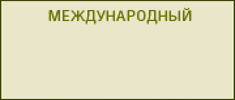List articles
|
This article discusses ways of increasing the competitiveness of Russian universities in both nаtional and international levels. It is shown that one of priority directions to ensure the competitiveness of the national education system is the development of university staff. The reasons caused the need of personnel development at universities are allocated. Experience of personnel development at leading Russian and foreign universities is examines in the article. Main directions of staff development of Russian universities are suggested in conclusion.
Continue...
|
|
|
Market of alcohol products is of special interest to the scientific and economic analysis, as it has the specificity of being one of the most important sources of replenishment of the budget. The alcohol market has its own peculiarities, which gives rise to the need for active public regulation of the processes of production, consumption, supply and demand of these products. The market is not able to limit the demand and consumption of alcoholic beverages. From the positions of the same social justice is very important limitation of demand and excessive consumption of such harmful goods as alcohol. For a number of reasons the need of proactive state intervention in the process of creating the pre-provisions on alcohol products, pricing and regulation of processes of distribution and redistribution of income from its production and implementation. The aim of the research is to study the mechanisms of state regulation of the alcohol market in the countries of the Eurasian region.
Continue...
|
|
|
№ 2(44)
30 april 2014 year
Rubric: Сompetitiveness of the personnel Authors: Serebrovskaja N., Katunova V. |
In article possibilities of application of a system rating method for an assessment of competitiveness of staff of the organization are described. The system of methods joins an assessment of personal potential, social and psychological characteristics, level of professional and administrative competence of employees. Result of this method is the rating of a business assessment of specialists of the organization, visually representing relative potential of employees and being scientifically reasonable indicator for further personnel changes.
Continue...
|
|
The article describes the general theoretical definition of the competitive position and competitive positioning of participants in economic competition. The author examines the different types of competitive position and background of their formation. The author formulates understanding of barriers to competitive positioning from external competitive environment. This article is based on the materials of the second chapter of the new edition of a textbook for bachelors «Competition», preparing for publication.
Continue...
|
|
|
The paper systematizes international practices devised by competition authorities of foreign countries and OECD to evaluate efficiency of competition policy and performance of competition au- thorities. The author analyses particular methods for evaluating competition policy efficiency applied by some foreign countries and OECD: report procedure, «ex post» analysis of enforcement efforts and a method providing for analysis of macro-level economic indicators. The report procedure is aimed at evaluating the work of antimonopoly bodies in general and for each group of actions undertaken by a competition authority. Such approach does not allow evaluating an impact upon a particular market. «Ex-post» evaluation provides insight into actual changes on the markets as a result of intervention by competition authorities. This method is an addition to the report procedure. Macroeconomic indicators (labour productivity, employment, level of investments and innovations, household expenses) can be used as performance indicators of a competition authority directly involved in establishing and supporting competitive conditions if an estimate is cleared from other factors that do not depend on actions of a competition authority.
Continue...
|
|
|
Antitrust legislation of many countries admits horizontal agreements between market participants as illegal per se not only in case of price fixing, market sharing, but also in case of bid-riggings. This paper presents a review and an academic assessment of market participants behavior at auctions by bidding. Such behavior creates incentives to collude and to sustain a collusion but with some features which are suitable for auctions. These suitable features for auctions are in detail described in the paper of R. Preston Mcafee and John Mcmillan «Bidding Ring». In order to collude, the bidders must resolve their asymmetric-information problem: they must have some way of selecting a winner and a winning bid. So the main characteristic of auction by bidding is asymmetric-information. The knowledge is non-uniform distributed between the parties to the con- tract: the seller does not know a demand of auction by bidding participants. Otherwise the seller would know what price it is worth to set. In our paper we used these features and the conditions of collusion’ sustainability to give academic assessment of market participants behavior at the auctions by bidding. We showed that the cartel sustainability in the conditions of e-auction corresponds to balance of profit and expected fine imposed in the case of cartel detection but not corresponds to discount factor as an indicator of «cartel sustainability». The cases of Russian antitrust practice which are devoted to the auction by bidding in the pharmaceutical market gave us an opportunity to show how the firms use the price strategies to keep the prices at the rate which give them to earn monopoly profits.
Continue...
|



